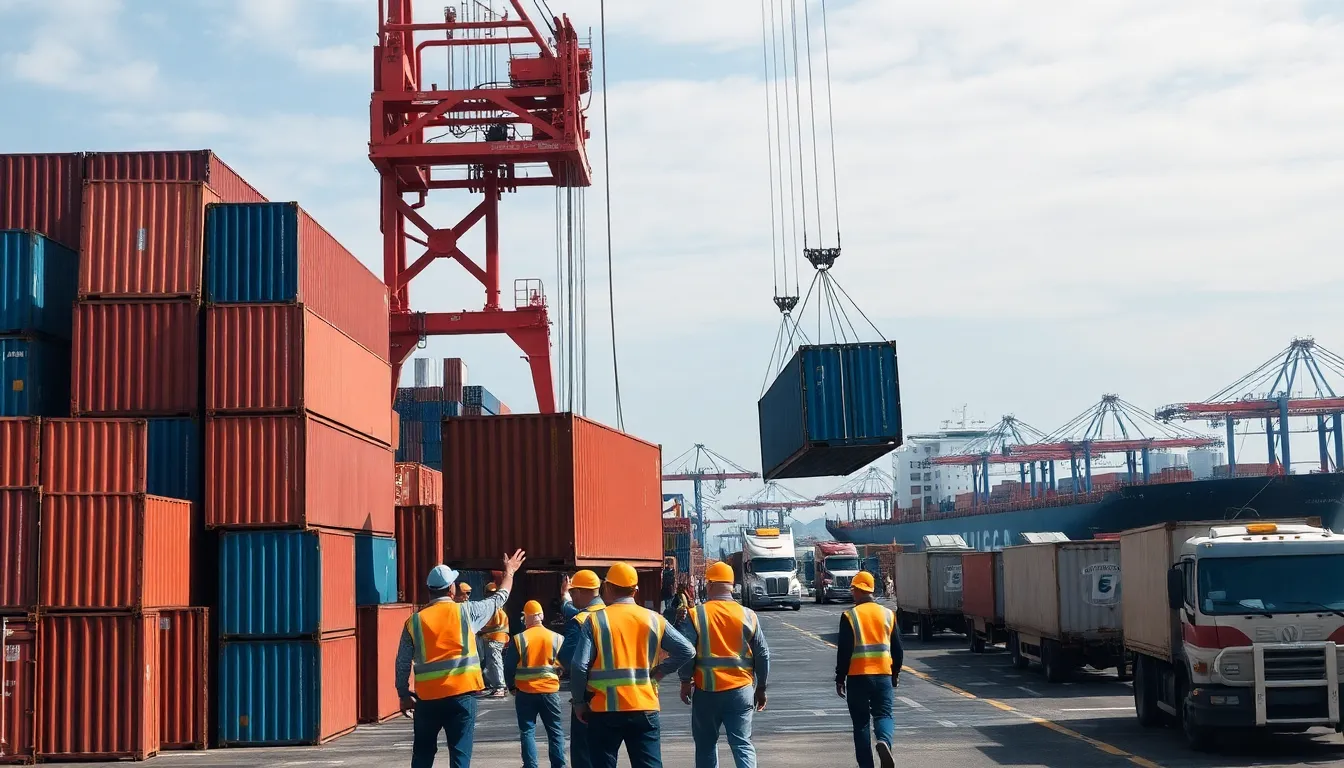In a world where goods zip across borders faster than a cat meme goes viral, staying updated on global trade news is more crucial than ever. Whether it’s the latest tariff tussle or a new trade agreement that has everyone buzzing, these developments can send shockwaves through economies and markets. It’s like a high-stakes game of chess, but with more coffee and fewer checkmates.
As countries negotiate deals and navigate challenges, the landscape of global commerce is constantly shifting. Understanding these dynamics can help businesses and consumers alike make savvy decisions. So buckle up and get ready to dive into the fascinating world of global trade news—where every headline could be the next big plot twist in the ever-evolving saga of international relations.
Table of Contents
ToggleLatest Developments in Global Trade News
Recent trade developments shape the international landscape. News on agreements and tariffs can alter economic conditions dramatically.
Trade Agreements and Treaties
Notable trade agreements emerge frequently. The Comprehensive and Progressive Agreement for Trans-Pacific Partnership (CPTPP) introduces lower tariffs among member nations. Countries like Canada and Japan report increased trade volumes since its inception. The U.S.-Mexico-Canada Agreement (USMCA) highlights evolving trade relationships in North America as it replaces NAFTA. Analysts indicate these agreements foster cooperation and create opportunities for exporters.
Effects of Tariffs and Duties
Tariffs and duties can disrupt trade flows significantly. For instance, the ongoing U.S.-China tariff conflict impacts a wide range of products, leading to price increases for consumers. Studies suggest that tariffs affect domestic markets by raising costs for businesses reliant on imported materials. Countries such as India and Brazil have adjusted their tariff policies to enhance competitiveness and protect local industries. Short-term gains might appear from higher duties, but long-term consequences often include reduced economic growth.
Economic Impacts of Global Trade

Global trade significantly affects economies worldwide. Developments such as tariffs and trade agreements play critical roles in shaping economic conditions.
Inflation and Supply Chain Disruptions
Inflation often rises due to increased import costs. Price hikes reflect the ripple effect of tariffs and shipping delays, directly impacting consumers. Products frequently cost more as businesses pass on expenses. Supply chain disruptions also hinder operations for manufacturers, creating bottlenecks in production. Industries reliant on imported goods face challenges that may lead to shortages. In markets like electronics and automotive, these disruptions are particularly evident. Companies adjust strategies to manage rising costs and satisfy consumer demand, demonstrating the interconnectedness of global trade.
Employment Trends in Trade Sectors
Trade sectors frequently influence employment patterns across nations. Jobs in exports tend to grow as countries engage in new trade agreements. Industries such as agriculture and technology see boosts when tariffs drop, increasing market access. Conversely, sectors exposed to high tariffs may experience job losses or stagnant growth. The U.S.-Mexico-Canada Agreement can serve as an example of improved labor opportunities in North America. Workers skilled in logistics and supply chain management become increasingly valuable as global trade expands. Tracking these employment trends can provide insights into future workforce needs, demonstrating how intertwined trade is with labor markets.
Regional Highlights in Global Trade
Regional developments continue to transform global trade dynamics significantly. Each area faces unique challenges and opportunities that shape their economic performance.
North America
Trade engagements in North America emphasize the effectiveness of the USMCA, which replaced NAFTA. Member countries, including the U.S., Canada, and Mexico, enjoy lower tariffs and greater cooperation. This agreement incentivizes exporters by enhancing market access and promoting trade growth. Canada benefits from increased agricultural exports, while Mexico’s manufacturing sector continues to thrive. Emerging supply chain partnerships further strengthen regional ties and encourage investments across sectors.
Europe
Europe faces a complex trade environment due to both internal and external pressures. The EU’s Green Deal has introduced environmental regulations, aiming to create sustainable trade practices. Member states adapt by aligning their industries with these standards, boosting innovation in green technologies. The updated trade agreements with the UK also enhance economic relations following Brexit, ensuring minimal barrier disruptions. Increased focus on digital trade reflects evolving consumer demands, promoting cross-border e-commerce growth throughout the region.
Asia-Pacific
Asia-Pacific nations play a crucial role in global trade, with China remaining a dominant force. Trade agreements like the CPTPP enhance collaboration among member countries, promoting tariff reductions and increased trade flow. Japan and Australia, for instance, benefit from higher export volumes in the agricultural sector. Emerging markets, such as Vietnam and Indonesia, continue to expand their presence, offering competitive advantages through lower production costs. The region’s vibrant supply chain networks facilitate rapid response to shifting consumer preferences, reinforcing its importance in the global economy.
Emerging Technologies in Trade
Emerging technologies play a crucial role in reshaping global trade dynamics. These advancements enhance efficiency, transparency, and connectivity in international markets.
Digital Trade Platforms
Digital trade platforms streamline transactions and facilitate cross-border commerce. Companies like Alibaba and Amazon create an environment where businesses access global markets easily. Users benefit from reduced costs, faster delivery times, and improved customer experiences. Adoption of these platforms results in increased participation of small and medium-sized enterprises in international trade. New functionalities, such as integrated payment systems and logistics solutions, further fuel the growth of digital commerce. Research from the World Economic Forum indicates that digital trade could contribute an additional $28 trillion to the global economy by 2025.
Blockchain and Trade Transparency
Blockchain technology significantly enhances trade transparency and security. This decentralized ledger allows participants to track shipments and verify transactions in real-time. Multiple industries see applications of blockchain, including agriculture, pharmaceuticals, and textiles. By providing an immutable record, blockchain reduces fraud and ensures compliance with regulatory standards. Companies implementing this technology streamline processes and foster trust among stakeholders. For instance, IBM’s Food Trust initiative enables consumers to trace the origins of their food products, promoting safety and accountability. A study from Accenture estimates that blockchain solutions could improve trade efficiency by up to 30%.
Staying updated on global trade news is crucial for navigating the complexities of international markets. The interplay of tariffs agreements and emerging technologies shapes economic landscapes and influences consumer behavior. As trade dynamics evolve it’s clear that both businesses and individuals must adapt to these changes to remain competitive.
The impact of trade agreements like the CPTPP and USMCA showcases the potential for growth and collaboration among nations. Meanwhile the challenges posed by tariffs highlight the need for strategic planning. Understanding these trends will empower stakeholders to make informed decisions and seize opportunities in an ever-changing global economy.




